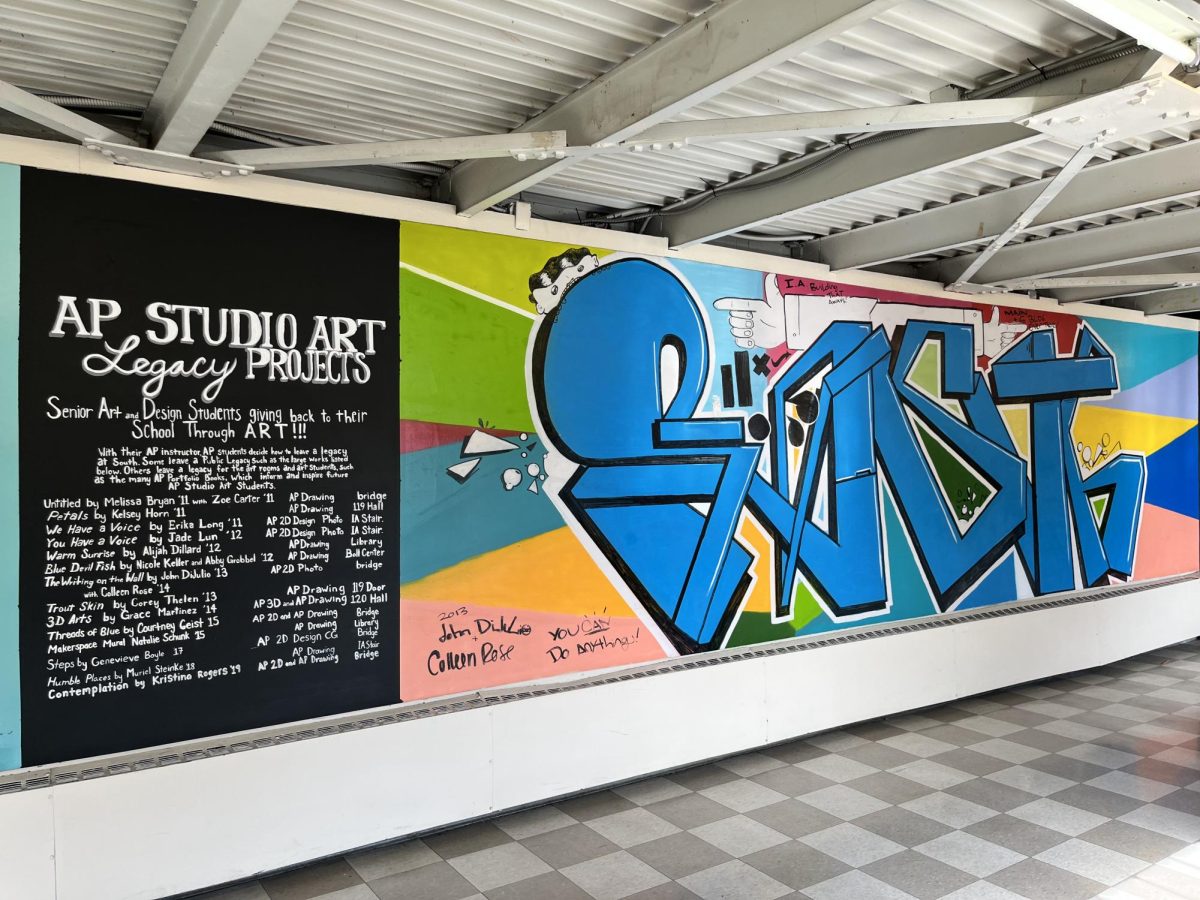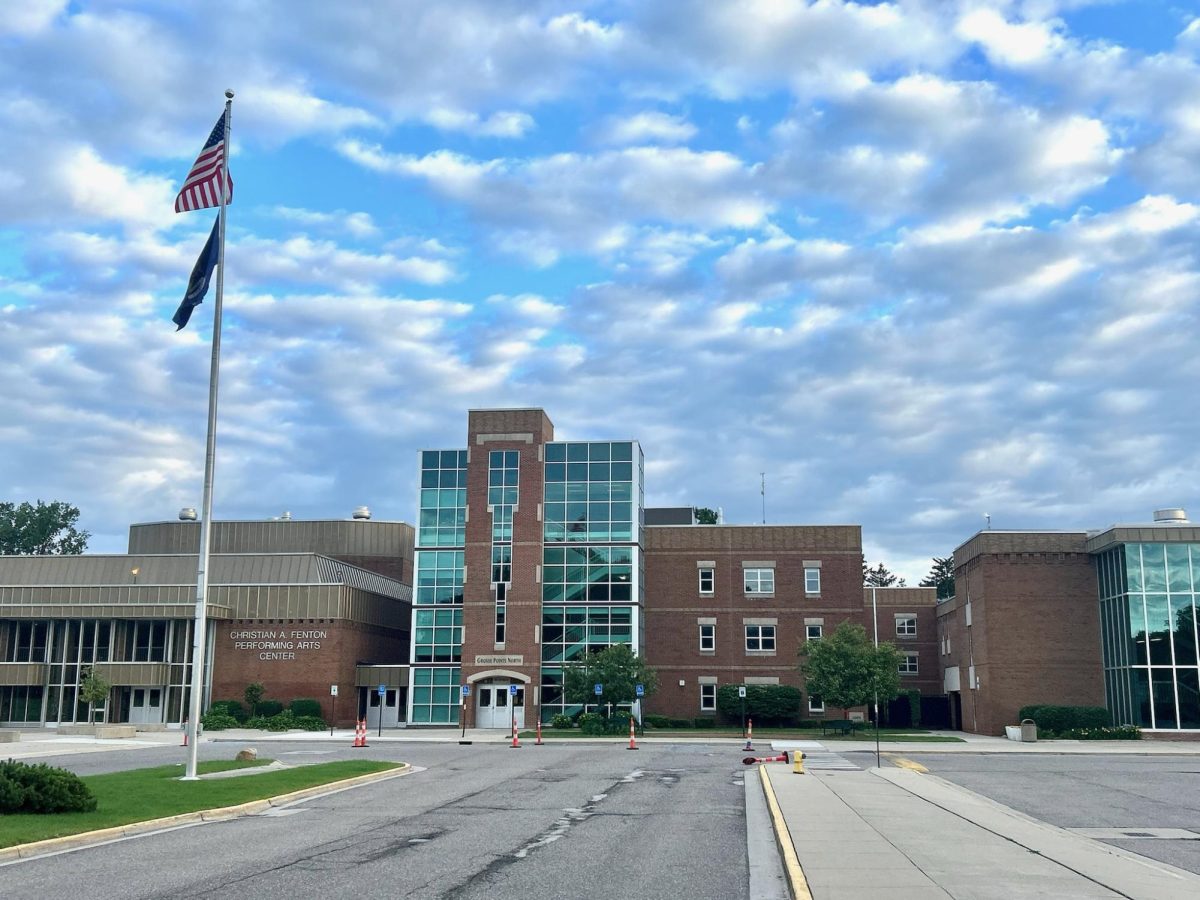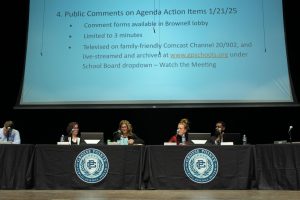Turbulent Transition
District navigates extended virtual time, drops proposed schedule
November 18, 2020

After finishing her four required Zooms on Friday, Nov. 6, an email popped up in North student Mia Cassar ’21’s inbox.
The message from the district outlined a new, fully-synchronous schedule with adjustments to start time, lunch times and breaks.
One hour before the Board of Education’s meeting on Monday, Nov. 9, the district sent out another email that revealed the plan would no longer be going into effect.
“I think the district’s abrupt change to remote learning was uncalled for,” Cassar said. “There was no talk of them wanting to change the current schedule prior to the email. It caused a lot of unnecessary stress on students, teachers and staff.”
According to Pierce Middle School choir teacher Heather Albrecht, teachers were notified of the new changes 30 minutes prior to the general email being sent out. Albrecht said she was appalled at the lack of teacher input.
“We had absolutely no say in this whatsoever,” Albrecht said. “There was no communication, and this was the first schedule during the pandemic that did not have a town hall precede it so teachers could ask questions.”
According to the official notification from the district, administrators decided to halt progress “based on feedback from staff, the community and students,” noting they were prepared “to partner and reflect” on the information they received. Albrecht, who advocated on behalf of the Grosse Pointe Education Association (GPEA) at the most recent board meeting, said this was not enough.
“Moving forward, (the GPEA) asks that (administration) allow teachers, students and parents a voice in the design of remote learning,” Albrecht said. “At a minimum, all stakeholders should be at the center of the decision-making process for creating a new schedule. The district should be transparent and methodical in its process and GPEA representatives should be invited to every in-person meeting.”
Deputy Superintendent of Educational Services Michael Jon Dean said most teacher feedback was gathered when individual teachers reached out, but noted there was no district-wide feedback system in place.
“Some teachers talked with us, emailed us suggestions and made comments to the Board of Education,” Dean said. “But in terms of formal written feedback, administration did not gather that.”
Dean acknowledged “we (as administrators) didn’t do enough listening.” However, he emphasized there were certain indications, such as the extension to virtual learning for the rest of the semester and an increase in failures (obtained from MISTAR, the district’s application for recording grade and attendance data) at the high school level, that warranted a change.
“We have about 400 percent more failures this quarter than last year at this time,” Dean said. “While grades aren’t the end-all-be-all, they are a metric. Our student achievement data shows that we don’t have time for a (long) decision-making process– a change to (virtual learning) must be a ‘now’ decision.”
The administration isn’t the first to reevaluate the current process. District parent Terry Burke said she looked at over 100 district schedules to understand how Grosse Pointe compares to the rest of the state.
“I like the idea of what East Grand Rapids High School is doing, where lectures are livestreamed and recorded,” Burke said. “It would reduce the need to have OneGP Virtual and shorten the amount of asynchronous work per day.”
Cassar said she also researched different methods of remote learning and favors a block schedule for its mental health and productivity benefits.
“The more asynchronous assignments I have, the more my stress levels increase and mental health declines,” Cassar said. “We need more time with our teachers and less busy work, but I don’t think Zoom all day is a good option. We need to have fewer but longer synchronous classes with some breaks in between classes to get homework done or relax.”
Cassar is not the only one struggling with mental health– per a survey conducted by Hanover Research for the district in September, 46 percent of the 525 high school students who responded rated their mental and emotional wellbeing as poor or very poor. Burke said, in talking to other district parents, the general message was similar to that of the survey.
“I’ve heard many parents say their children can’t keep up,” Burke said. “Some are failing classes because they are drowning in work, and the amount of time spent on a screen isn’t helping them at all.”
As the focus turns toward the implementation of new changes, assistant principal Joseph Spryszak said the high school administrative team is committed to working with staff in order to ensure the new schedule meets their needs.
“Teacher involvement has been increased through the district listening session that took place on Thursday, Nov. 12,” Spryszak said. “Teachers will also have a place on planning committees when recommendations for any new schedules are being made.”
Above everything else, Dean emphasized students’ well-being as a major factor for the district in creating an improved schedule, noting new surveys were sent to all students to provide a space for honest comments to be made.
“Every time the district makes a move, it is because it is in the best interest of the kids we serve,” Dean said. “That is our most important priority throughout all of this.”
Albrecht said she looks forward to collaborating with students, staff, the GPEA and the administrative team in order to produce a schedule that helps students and teachers succeed in the current circumstances.
“Speaking for the GPEA, we are eager to work with administration and join the team,” Albrecht said. “Our students deserve the best our staff and administration can give them, and that only happens by working together.”
“We had absolutely no say in this whatsoever. There was no communication, and this was the first schedule during the pandemic that did not have a town hall precede it so teachers could ask questions.” – Heather Albrecht, teacher














































































